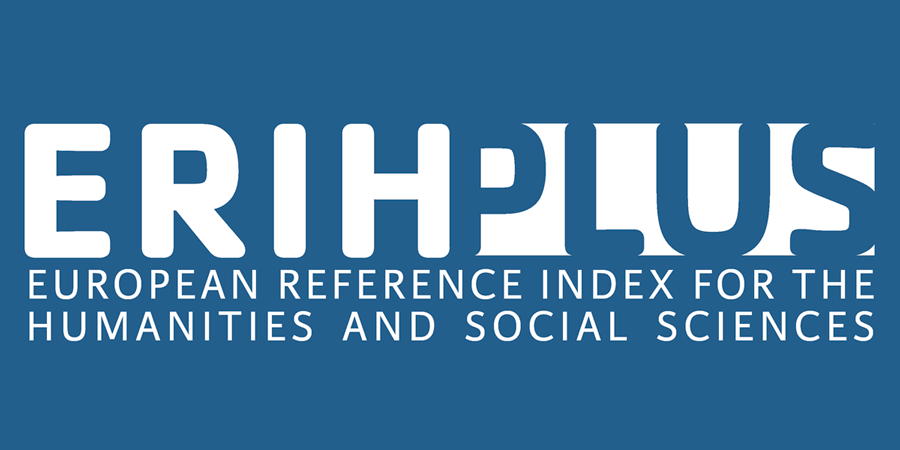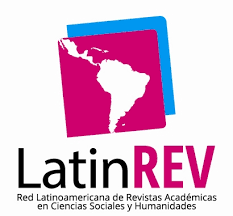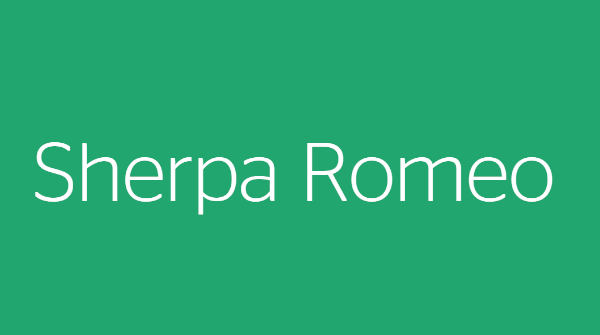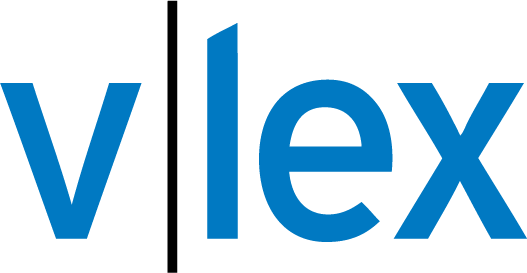Proceso de revisión
1. Breve descripción del proceso de selección de artículos
La Revista de Derecho de la Universidad Católica de la Santísima Concepción es una publicación revisada por pares y con revisión doble ciega. Cada trabajo enviado será examinado preliminarmente por el Equipo Editorial de la Revista de Derecho de la Universidad Católica de la Santísima Concepción, especialmente en cuanto a si el artículo se ajusta a los objetivos de la revista. Esta decisión se comunicará al autor en un plazo de 1 o 2 semanas después de la presentación del artículo.
Si un manuscrito cumple con las pautas y está dentro del alcance de la revista, los editores enviarán el artículo al menos a dos árbitros del Comité Editorial o a árbitros seleccionados. Las pautas para los árbitros y los criterios aplicados por ellos se relacionan con la calidad del contenido, la relevancia, el carácter científico, el interés del tema, si se utilizó o no una metodología científica, el uso actualizado de la literatura primaria y secundaria y la bibliografía. El sistema de revisión por pares es anónimo. Se recomienda a los revisores que sigan las Pautas Éticas de COPE para Revisores de Pares, disponibles en www.publicationethics.org.
La decisión final de aceptar o rechazar el artículo corresponderá al Equipo Editorial, en coordinación con el Comité Editorial de la revista. Por lo general, las decisiones se comunican en un plazo de 6 semanas después de la presentación del artículo.
2. Proceso de selección de artículos en profundidad
El siguiente esquema resume el proceso de revisión por pares.
a) Pre-revisión: Los autores inician el proceso enviando el artículo a través de la plataforma OJS de la Revista de Derecho de la Universidad Católica de la Santísima Concepción o enviándolo por correo electrónico a revistadederecho@ucsc.cl. En esta etapa, el Editor, en colaboración con el Comité Editorial, realiza una revisión inicial del manuscrito considerando lo siguiente:
i) Calidad del contenido, relevancia disciplinaria, carácter científico, interés del tema, si se utilizó o no metodología científica, uso actualizado de la literatura primaria y secundaria, y bibliografía.
ii) Relevancia con la línea editorial.
iii) Cumplimiento de los requisitos de envío.
iv) Revisión inicial de plagio. En caso de incumplimiento de los criterios 2 y 3, se informa a los autores y se les permite realizar correcciones. En caso de detectar plagio y dependiendo de la complejidad, el Comité Editorial informará a los autores sobre el rechazo o la posibilidad de corrección. Si se cumplen todos los criterios, el manuscrito avanza a la revisión por pares.
b) Revisión por pares: El Editor, con la colaboración del Comité Editorial, solicita la colaboración de revisores expertos considerando los siguientes criterios.
i) El revisor tiene formación académica e investigadora y publicaciones en el área de conocimiento.
ii) No hay conflictos de interés que puedan afectar el proceso de evaluación.
Los revisores evalúan utilizando un formulario en línea o en formato Word, y se les anima a incluir comentarios cualitativos o una copia del manuscrito con comentarios anonimizados.
Las opciones de evaluación son:
- Rechazado: el manuscrito no cumple con los criterios de relevancia, originalidad y calidad.
- Aceptado con correcciones mayores: el artículo puede ser aceptado después de un segundo proceso de revisión por pares.
- Aceptado con correcciones menores: el Comité Editorial solicita cambios a los autores, y si se verifica su incorporación, se acepta el artículo.
- Aceptado: el artículo puede ser publicado tal cual.
En aquellos casos en los que el Comité lo considere necesario, se utiliza un tercer evaluador cuyos criterios informarán la decisión final.
La decisión final de publicación depende del Comité Editorial y requiere el cumplimiento del estilo establecido y una revisión de antiplagio.
Los autores cuyos artículos hayan sido aprobados con modificaciones y/o aprobados para su publicación se comprometen a realizar correcciones de contenido, forma y estilo en un plazo de 5 días hábiles a partir de la solicitud.
c) Paso 1. Pre-Revisión
i) Persona responsable: Editor en Jefe
ii) Resultado: Correo electrónico enviado por el editor al autor con la decisión de aceptar el artículo para iniciar el proceso de revisión por pares, o una solicitud de cambios al artículo, o la decisión de rechazar el artículo.
Los siguientes elementos se revisan en la etapa de preverificación:
- Si el artículo se encuentra dentro del alcance del tema y la metodología de la revista.
- Si la información sobre la autoría, afiliación y metadatos está completa y confiable.
- Si el documento cumple con los criterios de la revista.
- Si la sección de bibliografía tiene un tamaño adecuado, está actualizada y está compuesta por fuentes reconocidas con sus respectivos enlaces DOI.
- Si el artículo no ha sido publicado previamente en ningún idioma.
- Si el artículo cumple con las prácticas éticas y de publicación científica adecuadas descritas por COPE: el Comité de Ética en Publicación, la Declaración de Singapur sobre Integridad en la Investigación y el Kit de Recursos Éticos de ELSEVIER.
- Si hay alguna evidencia de plagio en el manuscrito.
- Si el manuscrito cumple con los estándares mínimos de estilo, ortografía y puntuación.
- Si el artículo incluye los documentos adjuntos requeridos, incluyendo la Declaración de Originalidad y el Formulario de Información del Autor.
Cualquier manuscrito que muestre evidencia de plagio, información falsa sobre los autores u cualquier otro problema ético será rechazado de inmediato.
Los artículos que no cumplan con alguno de los criterios (que no esté relacionado con el plagio o problemas éticos) tendrán la oportunidad de enviar una versión corregida dentro de un plazo determinado. Los manuscritos que no incluyan la documentación requerida (Formulario de Información del Autor y Declaración de Originalidad) no podrán pasar al proceso de revisión hasta que cumplan con dichos requisitos.
Debido a la diversidad de temas en derecho y ciencias políticas, el Editor General puede solicitar la ayuda del Coordinador de Publicación y el Comité Científico para la revisión inicial.
iii) Seguimiento en línea: Una vez que un artículo es aceptado para avanzar al proceso de revisión por pares, el estado del artículo en la plataforma de la revista cambiará de “Asignación pendiente” a “En revisión”. A partir de ese momento, el autor podrá ver el estado del proceso en la pestaña “Revisión”.
La plataforma de envío asigna un identificador único a cada artículo. Cuando realices consultas o envíes un correo electrónico, asegúrate de incluir el código asignado en la línea de asunto.
d) Paso 2: Revisión por Pares
i) Personas responsables: Editores.
El proceso de revisión por pares dura aproximadamente entre 4 y 6 semanas, dependiendo de la disponibilidad de los revisores seleccionados.
La revisión del artículo en la Revista de Derecho de la Universidad Católica de la Santísima Concepción se define como una revisión realizada por pares que brindan asesoramiento experto sobre el contenido del manuscrito (y no pertenecen al equipo editorial de la revista). Es una revisión a ciegas, lo que implica que ni los autores ni los revisores conocerán la identidad del otro. Se asignarán al menos dos revisores. Esto promueve la confidencialidad del artículo y la objetividad del proceso de revisión.
A continuación se presentan los requisitos o criterios de selección de los revisores por pares:
- Tener al menos un grado de maestría en el campo de conocimiento del artículo.
- Publicaciones científicas en el área temática del artículo revisado en los últimos 2 años.
- No estar afiliado a la misma institución que los autores del artículo.
- No tener conflictos de interés con la revista o alguno de sus miembros: autores, editores, miembros del comité o personal administrativo.
Los revisores por pares seleccionados recibirán una invitación para participar en el proceso de revisión por parte del Editor General o del Editor Asistente. El revisor puede aceptar o rechazar la invitación. Si la acepta, el revisor tendrá acceso al texto completo del artículo anónimo y a un formulario en línea para respaldar el proceso de revisión. El proceso se llevará a cabo en la plataforma OJS (Sistema de Gestión de Revistas) de la revista o a través del correo electrónico de la institución.
En este proceso, además del tema y campo de conocimiento del artículo, se evalúan aspectos relacionados con la redacción del título, el contenido y la estructura del resumen, las palabras clave seleccionadas, el contenido y la estructura de la introducción, la metodología presentada, el nivel de argumentación, los resultados encontrados, la discusión, las conclusiones y el impacto general y contribución del artículo al conocimiento.
El revisor por pares presentará sus comentarios generales y recomendaciones para mejorar el texto y emitirá su recomendación con uno de los siguientes veredictos:
ii) Publicable sin cambios: La versión revisada del artículo cumple con todos los requisitos y puede ser publicada tal como está.
iii) Publicable con cambios menores: El artículo requiere cambios menores que pueden corregirse fácilmente.
iv) Publicable con cambios mayores: El artículo requiere cambios sustanciales, y la nueva versión del artículo con las modificaciones realizadas por el autor debe ser enviada nuevamente para su reevaluación por parte de los revisores por pares o los miembros del comité editorial.
v) No publicable (Rechazado): El artículo no es adecuado para su publicación. Su publicación no contribuiría al campo del conocimiento.
En caso de haber diferencias entre las recomendaciones de los revisores por pares, el Editor General (con posible asistencia del Comité Editorial) tendrá la última palabra sobre el artículo.
El Editor General emitirá un certificado a los revisores por pares del número, que se enviará al revisor por correo electrónico en el próximo mes.
Cualquier sugerencia que los revisores por pares deseen compartir con el Editor en Jefe será bien recibida en relación a los parámetros de revisión, indicadores de revisión, ética y recomendaciones del revisor. El Editor de la revista es el Dr. Cristian Aedo Barrena, y su correo institucional es caedo@ucsc.cl.
Los revisores deben seguir las pautas descritas por COPE – Comité de Ética en Publicaciones. Los revisores serán considerados responsables de: contribuir a la decisión de publicar, la puntualidad, la confidencialidad, garantizar los estándares de objetividad, reconocer la fuente y declarar los conflictos de interés.
e) Paso 3. Decisión del Editor
i) Personas responsables: Editor General, Editor Invitado.
Una vez recibidas las recomendaciones de al menos 2 revisores, el Editor General tendrá 2 semanas para comunicar la decisión al autor.
El Editor General puede aceptar (publicable), rechazar (no publicable) o solicitar revisiones adicionales por parte de los autores (publicable con cambios menores o mayores). En caso de que la decisión del Editor vaya en contra de las recomendaciones de los revisores por pares, dicha decisión debe ser justificada.
La decisión de publicar puede ser delegada a los editores invitados (si corresponde). Si un editor tiene un conflicto de intereses, será excluido de la decisión.
El autor recibirá un correo electrónico con la decisión del Editor, que incluirá un resumen de los comentarios y sugerencias realizados por los revisores por pares y establecerá un plazo para que el autor complete el proceso de revisión.
ii) Seguimiento en línea: La decisión del editor se reflejará en un cambio en el estado del artículo en la plataforma de envío. Si la decisión es “no publicable”, el artículo se eliminará de inmediato del proceso de revisión de la revista y el autor encontrará los detalles en la Sección de Archivo.
f) Paso 4. Revision por los Autores
i) Personas responsables: los Autores.
ii) Plazos de tiempo: Una vez emitida la decisión del editor, el autor contará con los plazos de tiempo mencionados anteriormente para revisar los comentarios de los revisores por pares, realizar los cambios necesarios y enviar la documentación requerida de cada autor.
- Un máximo de 1 semana cuando la decisión sea “Publicable con Cambios Menores”.
- Un máximo de 2 semanas cuando la decisión sea “Publicable con Cambios Mayores”.
iii) Publicable:
Se emitirá una decisión de “publicable” cuando:
- Los comentarios de los revisores por pares sean positivos y el artículo sea aceptado para su publicación sin comentarios adicionales de los revisores.
- El artículo requiera cambios menores, los cuales se hayan realizado y el artículo haya pasado exitosamente una segunda ronda de revisiones.
- El artículo requiera cambios mayores, los cuales se hayan realizado y el artículo haya pasado exitosamente una segunda ronda de revisiones.
Una vez recibida la versión final del artículo, se realizará una última verificación de plagio y se revisará la documentación para asegurarse de que esté completa.
iv) Seguimiento en línea:
Una vez emitida la decisión de “publicable”, el estado del artículo en la plataforma de la revista cambiará a “Edición”. El autor podrá ver el progreso del proceso en la pestaña “Edición”.
v) Publicable con Cambios Menores:
En este caso, el artículo requiere solo cambios menores que pueden corregirse fácilmente. Los autores deben abordar cada una de las sugerencias de los revisores por pares dentro del plazo establecido. En caso de que el autor decida no acatar alguna de estas recomendaciones, deberá proporcionar una justificación por escrito y el Editor General se reserva el derecho de tomar la decisión final sobre dichas consideraciones.
Una vez recibidos los cambios, el Editor General puede decidir emitir una decisión de “publicable” o puede requerir aclaraciones o cambios adicionales, si es necesario.
vi) Publicable con Cambios Mayores:
En este caso, el artículo requiere cambios sustanciales, después de los cuales debe ser reevaluado. Los autores deben abordar cada una de las sugerencias de los revisores por pares dentro del plazo establecido. En caso de que el autor decida no acatar alguna de estas recomendaciones, deberá proporcionar una justificación por escrito y el Editor General se reserva el derecho de tomar la decisión final sobre dichas consideraciones.
Una vez recibidos los cambios, el artículo será sometido a revisión editorial.
Una vez recibidos los comentarios, el Editor General puede emitir una decisión de “publicable” si se realizaron todas las correcciones apropiadas, o una decisión de “no publicable” en caso de que el artículo no cumpla con los criterios de los revisores.
g) Paso 5. Corrección, Producción y Publicación
i) Personas responsables: Autores, Coordinador de Publicación, Diseñador de Maquetación asignado.
ii) Plazos de tiempo: 20 días hábiles para la maquetación y corrección de pruebas (Diseñador de Maquetación).
3 días hábiles para abordar cualquier duda que surja en el proceso de corrección de pruebas (Autores).
3 días hábiles para realizar cambios (si es necesario) (Diseñador de Maquetación).
3 días hábiles para publicar la versión final en línea (Coordinador de Publicación).
Los artículos aceptados serán enviados al diseñador de maquetación asignado, quien comenzará el proceso de corrección de pruebas y maquetación. El diseñador de maquetación, a través del Coordinador de Publicación, podrá hacer consultas a los autores sobre cualquier duda relacionada con el estilo, el contexto o la maquetación de figuras o tablas (uso de términos técnicos, mejoras en la consistencia, estructura y símbolos de fórmulas, fuentes o citas faltantes, etc.).
El autor tendrá un plazo de 5 días para responder y abordar todas las solicitudes realizadas por el diseñador de maquetación.
La versión final incluirá el identificador DOI y los números de página asignados (Coordinador de Publicación).
El equipo de publicación informará al autor sobre cualquier cambio realizado por motivos técnicos o administrativos dentro de los plazos definidos.
h) Paso 6. Corrección y Retracción
i) Responsables: Equipo de Publicación, Comité Editorial, Autores, Lectores e Instancias Institucionales Relevantes.
ii) Plazos de tiempo: En caso de un informe, 1 semana para iniciar el protocolo.
iii) Documentación: Actas de Reuniones, Protocolos Institucionales y Pautas Éticas de COPE: el Comité de Ética en Publicación, Declaración de Singapur sobre Integridad en la Investigación y el Kit de Recursos Éticos de ELSEVIER: Publishing Ethics.
La Revista de Derecho de la Universidad Católica de la Santísima Concepción es una publicación de Acceso Abierto, lo que implica que cualquier persona puede ver y verificar el texto sin limitaciones y sin costo alguno. Si como lector tienes alguna pregunta sobre un artículo, puedes enviar tus inquietudes, comentarios y sugerencias por correo electrónico a revistadederecho@ucsc.cl. También puedes enviar un correo electrónico al Editor a la dirección institucional del Dr. Cristian Aedo Barrena, correo caedo@ucsc.cl.
Si encuentras errores o problemas éticos demostrables, por favor contáctanos para iniciar la investigación correspondiente y tomar medidas inmediatas. Si se confirma el error o problema ético, se iniciará el proceso de corrección o retractación correspondiente.
Las correcciones de errores importantes después de que el artículo ha sido publicado en línea se publicarán por separado mediante un documento de retractación al final de cada edición de la revista.
Los errores menores que no afecten la comprensión del estudio serán corregidos en las versiones en línea dentro de los 15 días posteriores a la publicación.
Las retractaciones se publican cuando los autores, lectores o editores encuentran errores importantes en un artículo publicado. Estos errores pueden ser involuntarios o resultado de una mala conducta científica.
Los editores estudiarán el documento en cuestión y se pondrán en contacto con los autores y las instancias apropiadas de la Universidad Católica de la Santísima Concepción antes de tomar la decisión final sobre la retractación. Para ello, se seguirán los protocolos institucionales, así como las recomendaciones de COPE: el Comité de Ética en Publicación, la Declaración de Singapur sobre Integridad en la Investigación y el Kit de Recursos Éticos de ELSEVIER, para la identificación de presuntas conductas inadecuadas o malas prácticas.
iv) Tasa de rechazo: Porcentaje de artículos rechazados por año.
2017: 10%
2018: 20%
2019: 30%
2020: 20%
2021: 20%
2022: 15%
Al aceptar la invitación del Editor para revisar el artículo, el revisor debe declarar que no tiene conflictos de interés y cumplirá con los estándares éticos, de confidencialidad y de plagio establecidos por la revista, los cuales se publican en su sitio web.
i) Paso 7. Ética de Publicación y Control Social
El Equipo Editorial tomará todas las medidas razonables para identificar y prevenir la publicación de artículos en los que se haya producido una mala práctica, como el plagio, la citación incorrecta o la falsificación de datos. Si se encuentra alguna mala práctica, el artículo será rechazado de inmediato. Si se descubre la mala práctica después de la publicación, se llevará a cabo una retractación o corrección.
Se invita a los lectores a informar cualquier caso de plagio a la dirección de correo electrónico del editor. Una vez verificada la posible existencia de una mala práctica, se suspende la inclusión del escrito en el procedimiento editorial de la Revista. Luego, se informará al autor. El plazo para presentar cualquier observación es de 10 días hábiles. En caso de falta de respuesta o después de recibir las explicaciones del autor, el editor debe decidir el resultado. La decisión del editor es recurrible ante el Comité Editorial de la Revista.











